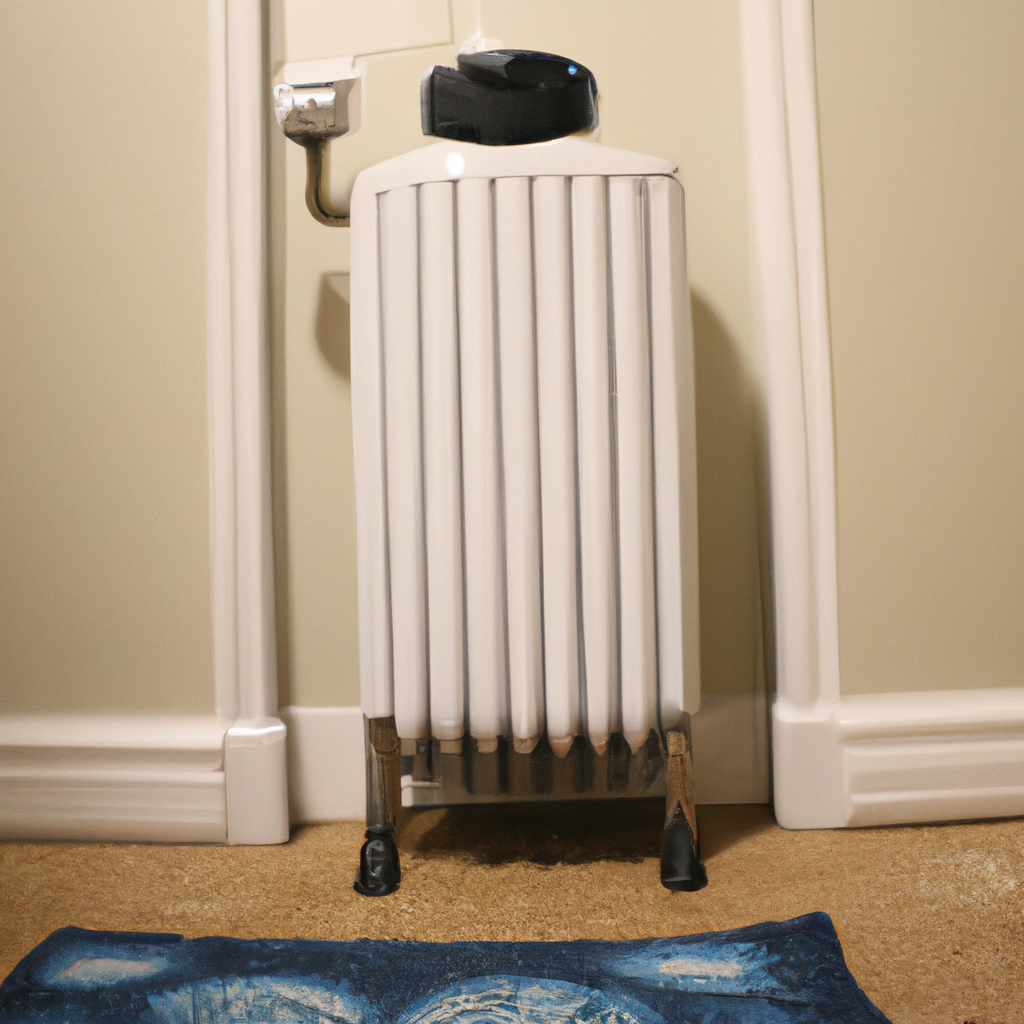The potential for a hot water heater to cause flooding in a home is an often overlooked hazard.
Yes, a hot water heater can flood your house if it is not properly maintained or if there is a plumbing issue. To prevent this from happening, regularly check the pressure relief valve, ensure that the temperature is set to the correct level and inspect the unit for signs of rust or other damage. If any of these issues are present, contact a plumber or hot water heater repair specialist right away.
As an HVAC engineer, it is important to be aware of the risks associated with these appliances and to take necessary precautions when installing or maintaining them.
This article examines the causes of hot water heater floods and how they can be prevented.
It also considers common misconceptions about the safety of hot water heaters and how understanding these risks can help create a safe environment for homeowners.
Finally, this article will explore the importance of community in addressing this issue, as well as practical strategies that individuals can implement to protect their homes from potential flooding caused by hot water heaters.
Potential Causes Of A Hot Water Heater Flood
A hot water heater flood can occur due to a variety of causes, most commonly involving an increase in water pressure or malfunctioning parts. A faulty valve or broken pipe can cause water to escape from the tank leading to flooding.
Furthermore, the tank itself may have cracks which allow water to seep out and cause a flood. Additionally, improper maintenance of the heater can lead to corrosion and rusting which compromises its integrity and allows water to escape.
These are all potential causes of a hot water heater flood in a household.

It is essential for homeowners to be aware of these potential hazards and take necessary measures in order to avoid such an event. Implementing preventative measures such as regular maintenance checks, monitoring water pressure levels, and inspecting the pipes for any signs of damage can help reduce the likelihood of a hot water heater flood.
Preventative Measures To Avoid A Hot Water Heater Flood
Preventing a hot water heater flood from occurring is of utmost importance to any HVAC engineer.
While it may seem like a daunting task, there are measures that can be taken to ensure the safety of your home and property.
By taking preventative steps such as installing a tankless-water-heater, conducting annual-maintenance on your current system, installing a shutoff-valve, and using a water-pressure-regulator and temperature-regulator, you can protect yourself from experiencing the costly consequences of a hot water heater flood.
Installing a tankless-water-heater is an effective way to reduce the chance of flooding in your home due to its size and efficiency in providing hot water on demand.
Annual maintenance can also help identify potential issues before they become more serious problems, such as worn out parts or buildup of sediment in the tank.
Additionally, having a shutoff-valve installed near the tank will allow you to quickly shut off the flow of water if need be.
A properly functioning water pressure regulator and temperature regulator will also help keep everything running smoothly and decrease the likelihood of flooding from occurring.
By taking these preventative measures, you can significantly reduce the risk of a hot water heater flood occurring in your home. All that is needed is for these components to be installed correctly and maintained regularly for optimal performance.
Taking proactive action now can save you time and money later when it comes to dealing with any damage caused by flooding. With this knowledge at hand, you are well equipped to confront any issues that may arise with confidence.
Signs And Symptoms Of A Hot Water Heater Flood
Identifying signs and symptoms of a hot water heater flood is essential for preventing serious water damage in your home.
Common warning signs of a potential overflow include appliance leaks, discolored or wet floors, and warm spots near the water heater.
In addition, if you notice any changes in the water pressure or temperature while running hot water, this may be an indication that the unit has malfunctioned.
If you suspect a hot water heater problem, it is important to investigate the issue further as soon as possible.
Warning signs such as strange noises coming from the unit or foul odors may also indicate a leaking tank.
Inspecting the area around the appliance can help reveal any existing puddles of standing water and other potential issues.
If you notice any pooling of liquid near your hot water heater, this could be evidence of an overflow and should be addressed immediately before any further damage is caused.
It is critical to pay close attention to your home’s plumbing system to spot any potential issues with your hot water heater. Regularly checking for signs of flooding can help identify problems early on and prevent costly repairs due to severe water damage caused by overflowing from a faulty appliance.
Taking action quickly can save you time and money when dealing with unexpected flooding from a broken down hot water heater.
Clean-Up And Restoration Following A Hot Water Heater Flood
In the aftermath of a hot water heater flood, it is essential to clean up and restore the affected area in order to minimize any potential damage.
Appropriate clean-up and restoration of the area can help prevent further destruction caused by water seeping into walls, floors, ceilings, and other structural components.
The first step in this process is to assess the severity of the hot water heater flood damage.
An HVAC engineer or experienced plumber should be consulted if there is any doubt as to how much damage has been done or what safety precautions need to be taken next.
The primary goal of the restoration process is to remove excess moisture from the affected area as quickly as possible. This can be accomplished by utilizing fans, dehumidifiers, and other equipment designed for drying out wet areas.
All carpets and furniture that have been damaged by a hot water heater flood must be disposed of immediately in order to stop mold growth from occurring. It is also important to inspect all electrical outlets for signs of water saturation before attempting to turn them back on.
Once all the excess moisture has been removed, repairs can begin. Repairs may include replacing drywall, flooring materials, insulation, trim work and wall coverings that have been compromised due to flooding.
Professional contractors should always be consulted when making major repairs due to the potential hazards associated with wiring and plumbing systems that have been exposed to high levels of moisture. Following these steps will ensure that your home or business returns back to its pre-flood condition as soon as possible.
Conclusion
The risk of a hot water heater flooding a home is very real.
It is crucial for homeowners to stay vigilant and take preventative measures to keep this from happening.
Hot water heater floods can cause extensive and expensive damage, leaving many feeling overwhelmed and hopeless.
It is important to be aware of the signs and symptoms that may indicate a flood.
If any evidence of water leakage or pooling is seen around the hot water heater, it is imperative to take action quickly to avoid further destruction.
Additionally, if an odd noise or smell arises from the hot water heater, it may signify an impending flood.
Finally, if a hot water heater flood has already occurred, it is essential to contact professionals immediately and begin the clean-up process swiftly. Without proper attention and treatment, the potential for mold growth and other forms of damage can be astronomical – like an ocean engulfing your house! Restoration professionals have specialized equipment designed specifically for this type of situation, so enlisting their help should be a homeowner’s first move when dealing with a hot water heater flood.




